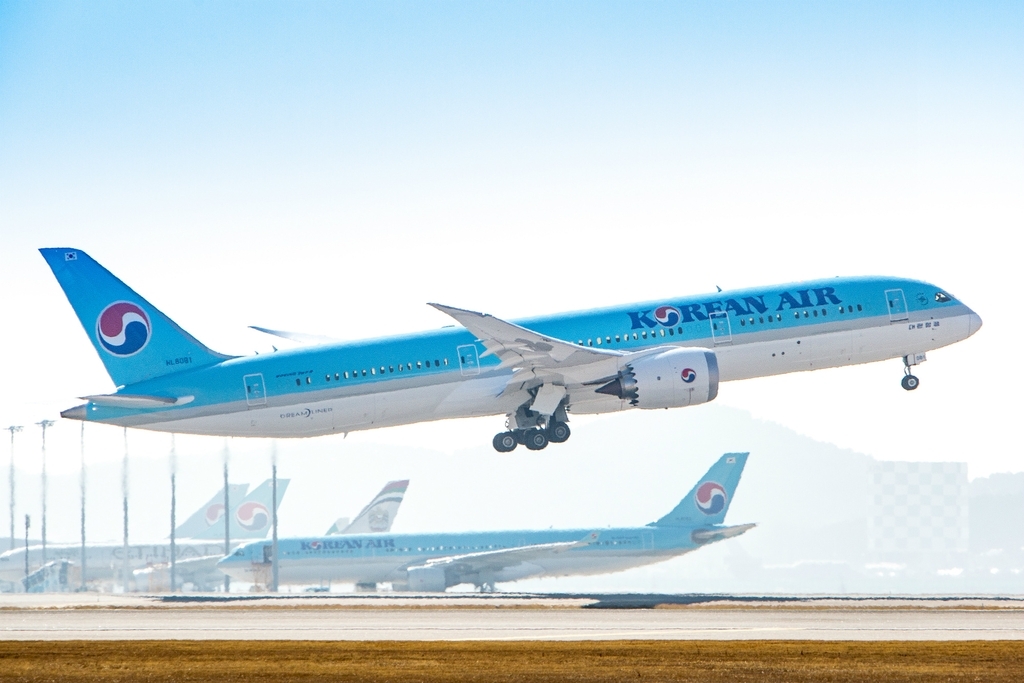 |
This file photo provided by Korean Air shows a B787-9 passenger jet taking off from a local airport. (Korean Air) |
Korean Air Lines Co., South Korea's biggest carrier, said Thursday its net losses narrowed in 2020 from a year earlier, as it offset the pandemic-caused slump in passenger travel with increased cargo deliveries and enjoyed decent gains from an asset sale.
Net losses narrowed to 291.45 billion won ($260 million) last year from 622.76 billion won the previous year, the company said in a regulatory filing.
"The proceeds from the sale of its in-flight catering and duty-free business and foreign-exchange gains were also reflected in the full-year bottom line," a company spokeswoman said over the phone.
In August, Korean Air signed a deal to sell the core business unit to local private equity fund Hahn & Company for 990.6 billion won to secure capital amid the COVID-19 pandemic.
The dollar fell to 1,088.00 won at the end of 2020 from 1,157.80 won a year earlier, which drove down the value of the carrier's dollar-denominated debts when converted into the local currency.
Operating profit fell 58 percent on-year to 109.48 billion won last year from 257.47 billion won a year ago. Sales declined 40 percent to 7.60 trillion won from 12.68 trillion won over the cited period.
The national flag carrier has suspended most of its flights on international routes since March as travel demand dried up amid virus fears.
The carrier has focused on winning more cargo delivery deals to offset a sharp decline in travel demand last year. Such efforts have partly paid off.
To ride out the COVID-19 pandemic, Korean Air put up its non-core assets for sale to secure operating capital and began to carry cargo in cargo seat bags, which attach to the seats of passenger jets.
In September, the carrier added two converted B777-300ER planes on US routes to transport cargo.
The move is in line with global peers, which are now using their passenger planes for cargo flights, either by using cargo seat bags or removing seats. (Yonhap)








